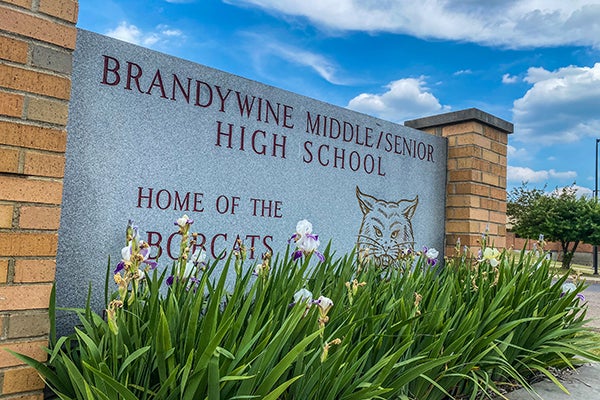Niles resident offers her backyard for archaeological excavation
Published 8:56 am Friday, July 13, 2018
NILES — Some people’s homes come with sweeping riverside views, large shady trees or a detached garage. Judy Truesdell’s home at 23 Market St. came with several historical treasures.
Starting last week, Truesdell shared these findings with an eager group of students from Western Michigan University’s Archaeological Field School, who were given permission to excavate her backyard.
Truesdell got in touch with Michael Nassaney, a WMU anthropology professor and principal investigator of Fort St. Joseph project, who believed there might be a connection between Truesdell’s yard and Fort St. Joseph. Every summer, the university partners with the city of Niles, bringing students to the site of the Fort St. Joseph to excavate for historical artifacts south of Riverfront Park on the east side of the river.
This year, Nassaney wanted to see if some of the fort’s precious artifacts may have made it to the other side of the river and ended up in Truesdell’s backyard, which is located near the St. Joseph River and not far from the site of the fort.
“It looked like an important location where people may have crossed the St. Joseph River in the 18th Century and as a thoroughfare, it might have been a place where they may have dropped artifacts,” Nassaney said. “It would give us some clues as to the movement of people at the time that the St. Joseph was occupied.”
Truesdell said she was happy to afford students from the school a unique learning opportunity and she had no qualms with a couple of holes in her backyard.
“Especially if it is for education,” Truesdell said. “Yeah, bring it on. They were from all over the state of Michigan, which I loved. It was a chance for them to see this sweet little town.”
Nassaney and 11 students began excavating the site July 5 and wrapped up the project on Monday. While he said they did not find anything related to the fort, students were able to uncover some interesting artifacts that were primarily from the 19th Century. The dig uncovered several pieces of ceramics, including plates and cups. They also found coal, machine cut nails – indicative of the 19th Century, as well as wire nails from the 20th Century.
Based on these artifacts, Nassaney said archaeologists can infer two possibilities: one being that people were not crossing the river exactly in that area or that activities in the 19th Century disturbed older artifacts through landscaping or leveling of the property.
Nassaney said the discoveries did not disappoint him or his students.
“Either way we get information about what was happening there,” Nassaney said. “While we are always excited to find what we are looking for sometimes we don’t find what we are looking for, but that gives us important information about that location as well.”
For budding archaeologists, putting the skills and methods they learn in the classroom to the test is a key component to success in the career field. Nassaney said this project gave them that chance and now they will take those skills to the site of the Fort St. Joseph dig site, where students will work with community members throughout a portion of the summer.
For Truesdell and her husband Terry, this is not the first time their 150-year-old home has been found to have an intriguing tie to the past. For example, about five years ago when Terry was replacing the bricks on the home’s walkway, he uncovered a marble slab that upon further discovery turned out to be headstone.
“He called me and said, ‘I just uncovered a tombstone,’” Truesdell said. “I said, ‘I will be right there.’”
The story was covered nationally by news stations and a family from Elkhart eventually showed up and claimed the headstone. Truesdell said they believe the tombstone, which belonged to a Jane McKibben, had an error on it and was therefore re-purposed in the home’s walk way.
Truesdell shared this history and some other historical features of the home with the archaeology students.
In the weeks to come, the students will continue their excavation at the site of the Fort St. Joseph – which was first established by French Jesuits in the 1680s. The fort would serve as a key post for fur trade between the Native Americans and French. In the 18th Century, the fort continued to serve as a trading post and garrison.
Next week middle school students will join archaeologists in learning about the site’s history, followed later by high school students and adult residents. Finally, an open house will take place from 10 a.m. to 4 p.m. Aug. 4 and 5. During that time, people will be able to see the artifacts discovered, dig sites and immerse themselves in historical re-enactments, crafts and activities. The fort is located at the corner of Fort and Bond streets.
Since finishing up their dig, the holes in Truesdell’s yard have been filled in and are barely perceptible. For Truesdell the subtle patches in the grass remind her of yet another tie her home has to Niles history and she said she was happy to be part of that discovery.
“I think it was a great opportunity and I’m sure Dr. Nassaney would say it was a good find on a lot of levels,” Truesdell said.










